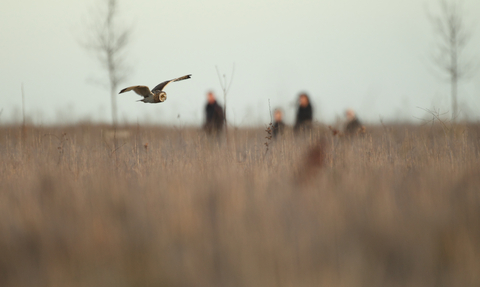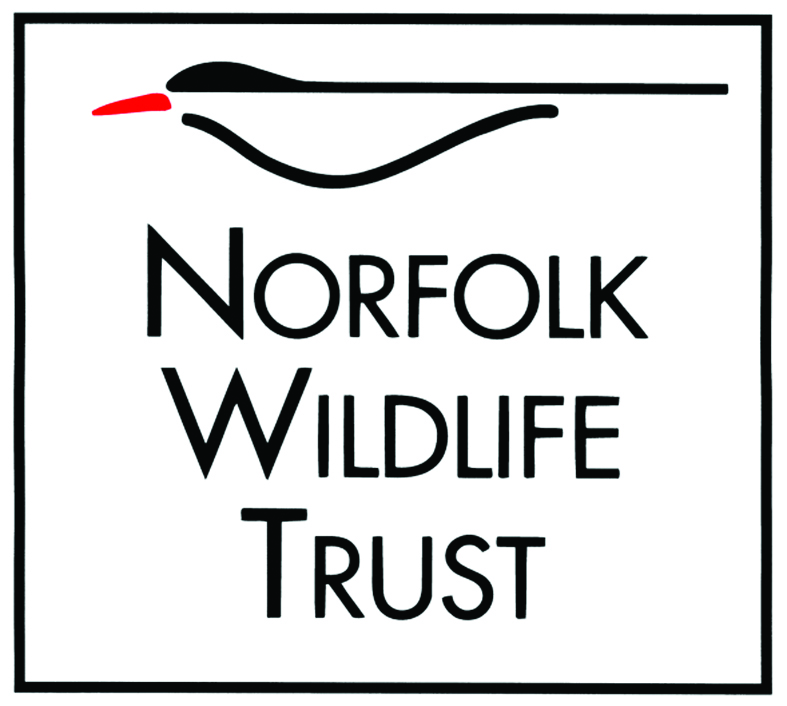
A short-eared owl (credit: Luke Massey/2020VISION)
Local Nature Recovery Strategy
You can support the development of Norfolk’s Local Nature Recovery Strategy!
Over the past three years, Norfolk County Council have been creating a Local Nature Recovery Strategy. Wildlife organisations including NWT, landowners and businesses have all been involved, and now the draft Strategy is open for public consultation, with a plan to publish the final version later this year. The public consultation is open until 11 June 2025.
The purpose of the Strategy is to help guide activities across the county to support the vital effort to expand, buffer and re-create wildlife habitats across Norfolk.
The Strategy includes:
-
A document that explains why the Strategy is needed and what it hopes to achieve
-
A map that shows where nature reserves and key habitats like ancient woods or ponds exist in Norfolk, and suggested ways to link these wildlife-rich features up with new habitats and wildlife corridors
How can I get involved?
The Strategy is now open for public consultation until 11 June 2025. During this time, everyone can have their say. It’s important that everyone gets involved, especially if you have ideas to support nature on your patch or know the wildlife of your area well.
To take part in the consultation, you’ll be asked to read the draft Strategy and answer a series of questions online.
If you haven’t done anything like this before, we’re here to help. Take a look at our guidance notes below, designed to support you to take part in the public consultation.
Take part in the Local Nature Recovery Strategy public consultation
NWT’s Guidance notes - about the questionnaire
To give you an idea of what to expect, here’s a bit of information about the consultation process and some of our thoughts on the questions included.
Questions 1-8
These are about you, any group you belong to and how useful or easy you find the document and map
Question 9
This question asks whether you agree with the suggested measures and actions included within the Strategy to support our habitats and species. You can use the box to add any other suggestions or to indicate if you disagree with a measure.
Our thoughts: NWT welcomes the suggestions included, but we think it is important that all land management decisions are based on good evidence. We recommend that sites are surveyed, and the advice of ecologists is sought before final decisions are made (See page 98 of the Strategy).
Questions 13 and 14
These questions ask about how ambitious the strategy is and if you think it can be delivered.
Our thoughts: NWT believes that the strategy is ambitious. Delivery will need continued support from Norfolk County Council and monitoring to see how it is working! If you are representing farmers, a Parish/Town Council or community group, you might want to say what help and support you might need to use the strategy.
The map
If you can access and use the map, you can see that there are suggestions for individual areas (down to fields in some places). These suggestions include where woodland could be planted, or heaths re-created.
If you know the wildlife of your area well, take a look at the map and add any suggestions - this might be about existing habitats not shown or about what sort of new habitat would be best in an area, based on the local wildlife you know about.
However, the map is complicated and if you find it too tricky, you can just answer the questionnaire!
Glossary
The map and the document include some new terms that you may not be familiar with - here is a quick guide to them!
Areas of Particular Importance for Biodiversity (APIB) - important and diverse habitats that make up the existing network for nature across Norfolk.
Areas That Could Become of Particular Importance (ACBs) - places where opportunities for nature recovery actions have been mapped within the Strategy. For example, suitable places where new woods could be planted.
Potential Measures (actions) - these are the possible actions that could be taken to make more, bigger, better and more joined up habitats in areas that currently do not benefit from having detailed management plans. For example, planting hedges and restoring ponds.
Wider Environmental Benefits – these are actions we can take where we help, or work with, nature in ways other than managing land. For example, reducing water pollution, managing flood water, creating new green spaces for people and creating new ways to store carbon.
Areas of Strategic Importance - areas that are important for nature such as County Wildlife Sites (CWS) and key wildlife corridors. They are important places, and cover a wide range of habitats, so have been mapped as being of strategic importance.
What NWT is doing
NWT has provided expert wildlife advice during the writing of the draft Strategy and is continuing to provide comments – both through the public consultation and as members of the LNRS steering group.
What’s next?
Watch this space for the final Strategy once it is published. It will be publicly available and, amongst other things, will:
-
Help you make planning decisions in your community
-
Support land management decisions on amenity spaces and farmland
-
Help businesses support action for nature
-
Encourage wildlife gardening to help link up greenspaces in our towns and countryside
